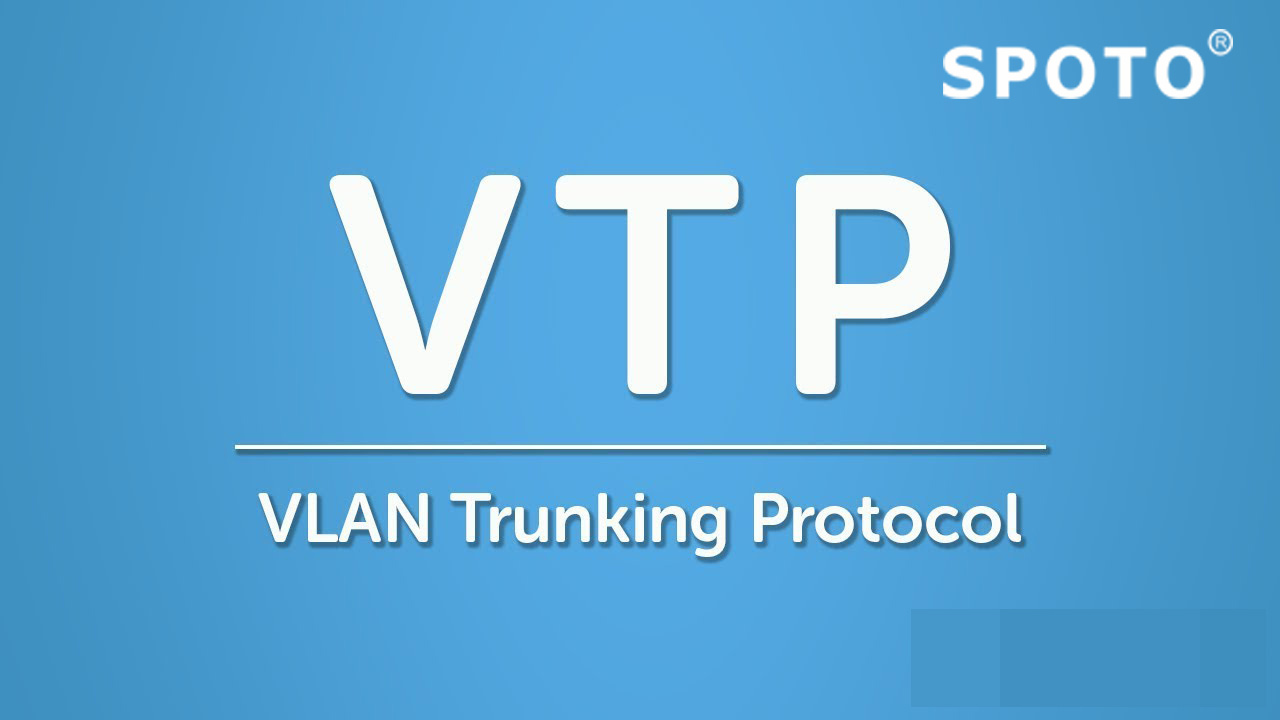VLAN Trunking Protocol (VTP)
VTP is considered to be the Cisco proprietary protocol used to maintain consistency throughout the network or user can say that synchronizing the VLAN information in same VTP domain. VTP allows you to add, delete and rename VLANs which is then propagated to other switches in the VTP domain. VTP advertisements could be sent over 802.1Q, as well as ISL trunks. We would be learning more about the VLAN Trunking, but before that, it would be good if you also acquire some good training courses, which are being offered at the SPOTO Club.
Requirements
There would be some requirements for VTP to communicate VLAN information between switches. These are:
1. The VTP version must be same on the switches user wants to configure
2. VTP domain name must be same on the switches
3. One of the switches must be a server
4. Authentication should match if applied
VTP modes – There are 3 modes:
1. Server – The switches are set to this mode by default. This mode allows you to create, add and delete VLANs. The changes you want to be made should be done in this mode. Any changes that are done on this mode (on a particular switch) will be advertised to all the switches that are in same VTP domain. In this mode, the configuration is saved in NVRAM.
Configuration – User would be first to make the switch VTP server
Switch# config terminal
Switch(config)#vtp mode server
Now, User would have to make a VTP domain assign a password for authentication.
Switch(config)#vtp domain geeks for geeks
Switch(config)#vtp password hard work
User can verify the configuration by:
Switch(config)#do should vtp password
Switch(config)#do show vtp
2. Client – In this mode, the switches receives the updates and can also forward the updates to other switches (which are in same VTP domain). The updates which are going to receive here is not saved in NVRAM so all the configuration will be deleted if the switch is reset or reloaded i.e the switches will only learn as well as passing the VTP summary advertisements to the other switches.
Configuration – As the switches are set to server mode by default, therefore the user can change it to client mode by:
Switch(config)#vtp mode client
3. Transparent – This mode only forwards the VTP summary advertisements through the trunk link. The transparent mode switches can make their own local database which keeps secret from other switches. The whole purpose of transparent mode would be to forward the VTP summary advertisements but not to take part in the VLAN assignments.
Configuration – User could be changed the mode to transparent by
Switch(config)#vtp mode transparent
Configuration Revision Number
A configuration revision number is a 32-bit number that indicates the level of revision for a VTP packet. This configuration number which would be tracked by every switch in order to find that the received information is more recent than the current version.
Every time one modification is done on the VLANs by the server switch, the configuration revision number increases by one. The client mode devices receive it and check if the configuration revision number that they received is latest or not by comparing its own configuration number by the number received. If the configuration number would be greater than their own number then the devices would be updated their configuration and clear it to other clients of the same VTP domain. If the configuration number is the same then the devices just pass it to other clients of the same VTP domain.
Hence, if you wish to have more information about the VLAN Trunking VTP, you should gain at the prep courses, which could be offered at the SPOTO Club.
More you may be interested:
2. A Major Point of CCIE Lab Exam: NAT - Network Address Translation
3. Introduction to Local Area Network (LAN)
4. The Learning Method And Growth Path of Network Engineering Beginners

 Join Telegram Study Group ▷
Join Telegram Study Group ▷














